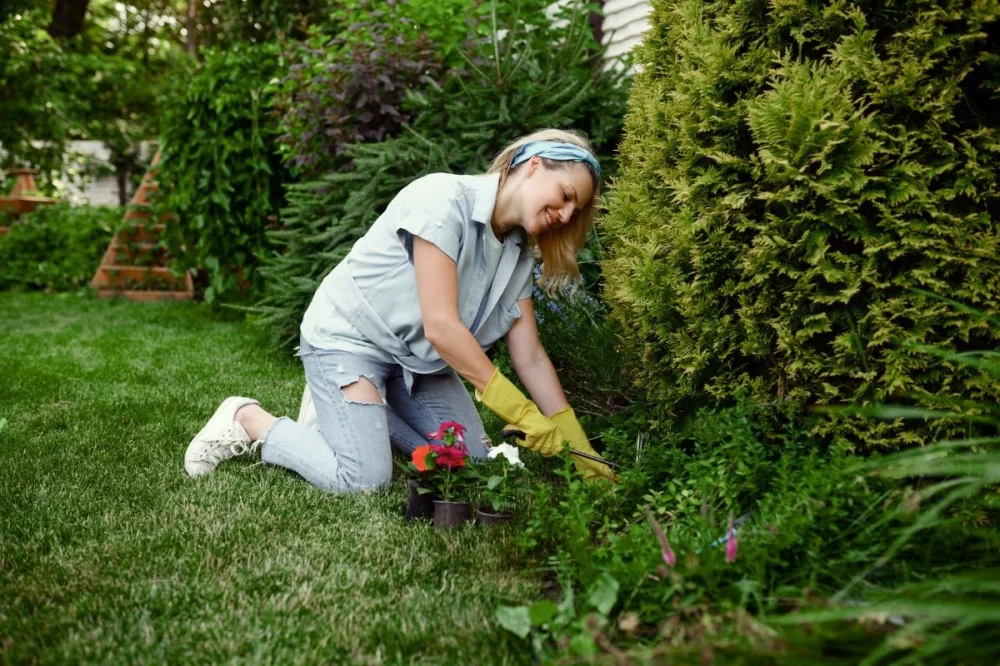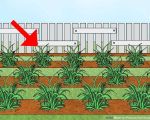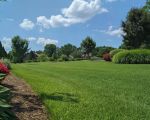
Eco-Friendly Lawn Care Practices: My Journey to a Greener Lawn
When I first bought my house, I was thrilled with the idea of having a large, green lawn. I imagined long summer evenings spent relaxing in the yard, watching my kids play, and enjoying the outdoors. However, as time went on, I began to realize that my lawn care practices weren’t as environmentally friendly as I thought. The constant use of chemical fertilizers, pesticides, and excessive watering made me wonder if there was a better, more sustainable way to maintain my lawn.
After some research and experimentation, I shifted to a more eco-friendly lawn care routine. It’s been an incredibly rewarding journey, and I’m excited to share the sustainable tips and practices that have transformed my lawn into a beautiful, green space that I’m proud of—without harming the environment. Here’s how I adopted eco-friendly lawn care practices and how you can too!
1. Choosing Eco-Friendly Grass Varieties
The first step in my eco-friendly lawn transformation was choosing the right type of grass. Not all grasses are created equal, and I quickly learned that some varieties are more water-efficient and drought-tolerant than others. By opting for cool-season grasses like fescue or Kentucky bluegrass, which are naturally more resilient in my region, I reduced the need for excessive watering, especially during dry spells.
I also learned that native grasses are often the best choice for sustainable lawns. Native grasses are adapted to local climates and soil conditions, which means they require less water and fewer fertilizers to thrive. If you’re considering switching up your lawn, I recommend looking into grasses that are native to your area—they’ll not only require fewer resources but also support local wildlife.
2. Organic Fertilizing: Nurturing Your Lawn Naturally
One of the biggest changes I made in my lawn care routine was switching to organic fertilizers. I had previously used chemical fertilizers, but I began to realize the harmful effects they were having on the environment—especially when they washed into local waterways. Organic fertilizers, on the other hand, nourish the soil naturally, enriching it with beneficial microbes that promote healthy grass growth.
At first, I was a bit skeptical about whether organic fertilizers would work as well as their synthetic counterparts, but after a few months, I noticed a big difference. My lawn became greener, thicker, and more resistant to pests. Plus, organic fertilizers are safer for pets and children, which gave me peace of mind.
Instead of traditional fertilizers, I now use compost and organic mulch. These not only provide essential nutrients to the soil but also improve soil structure and water retention, helping my lawn survive dry spells with less water.
3. Water Conservation: Efficient Irrigation Practices
Watering my lawn used to be a major concern, especially during hot summer months. I had a tendency to overwater, thinking that more water meant a healthier lawn, but I soon realized that this wasn’t the case. Overwatering can lead to shallow root growth and waste valuable resources.
To conserve water, I invested in a smart irrigation system with a timer and moisture sensors. This system ensures that my lawn gets the right amount of water at the right time—no more, no less. I also started watering my lawn in the early morning to reduce evaporation and avoid stressing the grass during the hottest parts of the day. Deep watering, as opposed to frequent shallow watering, encourages deep root growth, making the grass more drought-tolerant and reducing my water usage overall.
Additionally, I now mulch my lawn clippings instead of bagging them. Grass clippings act as a natural mulch that helps retain moisture in the soil, reduces evaporation, and even adds organic matter to the soil as they break down. It’s a simple practice that benefits both the lawn and the environment!
4. Natural Pest Control: Keeping Pests at Bay
At first, I relied on chemical pesticides to control pests in my lawn, but over time I realized the negative impact they had on the ecosystem. Pesticides can harm beneficial insects, birds, and even aquatic life, so I switched to natural pest control methods. One of the first things I tried was introducing beneficial insects like ladybugs, which are natural predators of aphids and other pests.
For areas with more severe pest problems, I started using diatomaceous earth, a natural substance made from the fossilized remains of tiny organisms. It’s safe for humans, pets, and wildlife, but it’s deadly to soft-bodied insects like slugs, snails, and ants. I also use neem oil, which is derived from the neem tree and acts as a natural pesticide, repelling insects and preventing fungal diseases without harming beneficial insects.
5. Mowing Practices: Eco-Friendly Lawn Maintenance
Mowing may seem like a simple task, but I discovered that my mowing habits could either help or harm my lawn’s health and the environment. To maintain a healthier, more eco-friendly lawn, I started mowing less frequently and leaving my grass a bit longer. Longer grass shades the soil, reducing evaporation and helping retain moisture during dry spells. It also encourages deeper root growth, which makes the lawn more resilient to heat and drought.
Another key change I made was to mow with a mulching mower. This type of mower chops up grass clippings into small pieces that are spread back onto the lawn, where they decompose and return valuable nutrients to the soil. It’s a simple change that reduces yard waste and benefits my lawn.
6. Reducing Lawn Chemicals: Avoiding Harmful Herbicides
In the past, I used chemical herbicides to keep my lawn free of weeds, but I quickly realized that these chemicals not only harmed the environment but also impacted the health of my soil. After switching to more eco-friendly alternatives, I began using organic weed control methods like hand weeding, vinegar sprays, and corn gluten meal, which prevents weeds from germinating without damaging the surrounding grass.
By reducing the use of harmful herbicides, I’ve noticed that my lawn is healthier overall. The soil is less compacted, and beneficial organisms like earthworms are thriving, which helps with natural pest control and improves soil structure.
7. Composting and Soil Health
Composting has become an essential part of my eco-friendly lawn care routine. I started composting kitchen scraps, yard waste, and grass clippings, and over time, I’ve created a rich, organic compost that I use to amend my lawn’s soil. Compost helps improve soil structure, increase water retention, and promote healthy root growth, all of which are essential for a thriving lawn.
Instead of relying on chemical fertilizers, I apply compost to my lawn in the spring and fall. This not only nourishes the grass but also helps balance the soil’s pH, ensuring that the lawn gets the nutrients it needs without any harmful side effects. By composting, I’ve reduced my waste while improving the health of my lawn and garden.
8. Embracing a Lawn Alternative
While I’ve made every effort to create an eco-friendly lawn, I’ve also started to embrace more sustainable alternatives to a traditional grass lawn. In areas of my yard where grass struggles to grow, I’ve planted ground covers like clover, which require less water, fertilizer, and maintenance than traditional grass. Clover is also a nitrogen fixer, meaning it naturally adds nutrients to the soil, reducing the need for additional fertilizing.
Additionally, I’ve begun incorporating more native plants and flowers into my yard. These plants attract pollinators, like bees and butterflies, and require less water and care compared to non-native species. By diversifying my landscape, I’ve not only made my yard more eco-friendly but also created a habitat for local wildlife.
In conclusion, adopting eco-friendly lawn care practices has not only improved the health of my lawn but also contributed to a more sustainable, environmentally friendly lifestyle. By choosing the right grass, using organic fertilizers, conserving water, controlling pests naturally, and reducing chemical usage, I’ve created a lawn that is both beautiful and eco-conscious. I encourage you to try some of these practices in your own lawn care routine—you might be surprised at how easy it is to go green and make a positive impact on the environment!








